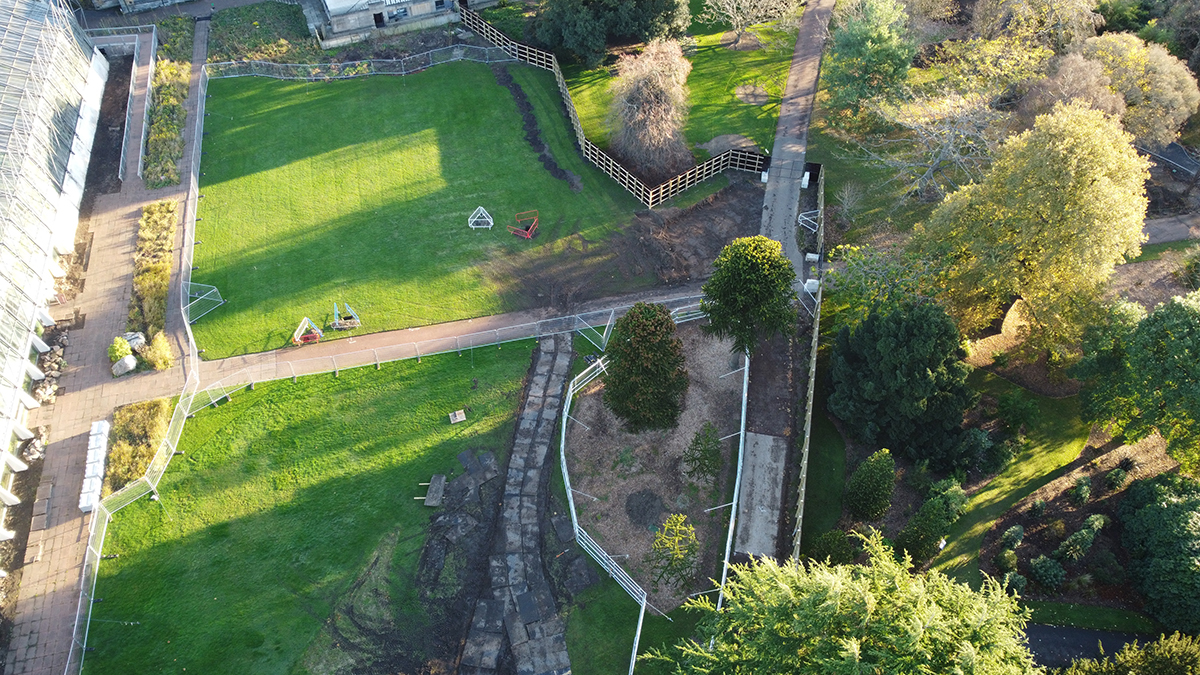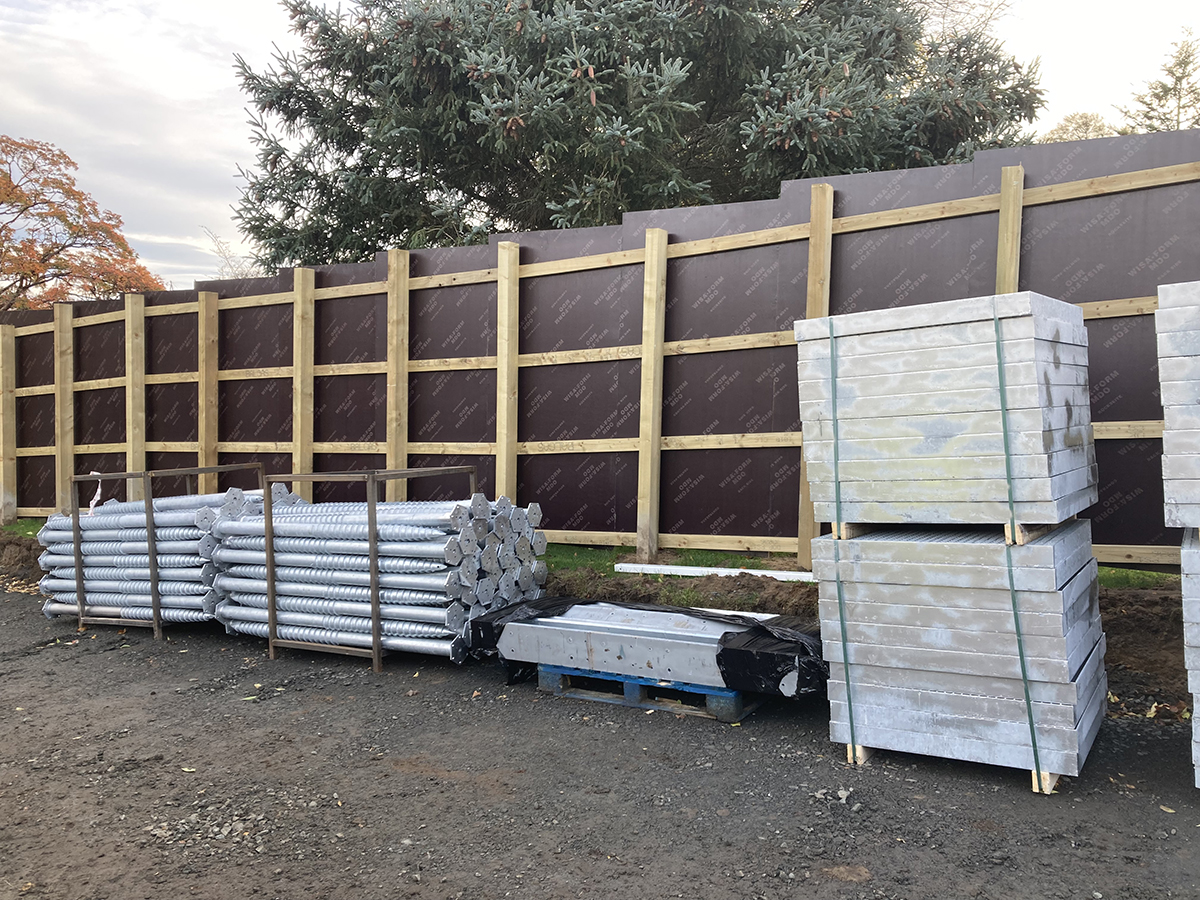
A tree protection system at the Royal Botanic Garden Edinburgh (RBGE) has combined with modern construction technology to help protect a renowned living collection of plants.
The multi-million pound Edinburgh Biomes development includes the restoration of RBGE’s heritage glasshouses but, with construction set to take place in heart of the 70-acre site, twelve of the garden’s 3,500 trees were at risk of damage.
Arboriculture specialists at RBGE, environmental consultants Ironside Farrar and construction company Balfour Beatty, worked with supplier Green Grid Systems to devise a bespoke plan to protect Scotland’s National Botanic Collection.
Will Hinchliffe, arboriculture supervisor at RBGE, explained, “Trees provide enormous value to society, particularly in urban landscapes where they help people to connect with nature. However, they are also very vulnerable. A tree which takes decades or even hundreds of years to reach maturity, can suffer irreversible damage in just a few minutes.
“As curators of trees which are often endangered in the wild, our priority is to protect and retain mature trees that grow in close proximity to the development site. In turn, the survival of prominent features will help to embed the site into the natural environment, adding to the sense of an established landscape when the project ends.”
Gillian Smith, technical director at Ironside Farrar, added, “As a world-leading botanic garden, RBGE has specific site conditions which first required careful consideration. Working closely with manufacturer Green Grid Systems, the team has adapted the existing systems to suit the Garden’s requirements and have delivered a solution that will secure the best long-term outcome for invaluable specimen trees.”
Five years in the planning, the teams incorporated techniques they learned from previous construction projects at the garden and introduced new technologies. These include a root bridge of steel piles and beams submerged into the haul road surface. Designed to protect vulnerable root systems, a void beneath the raft-style grid allows space for future root growth without affecting the final paved surface.

It will also disperse the weight of heavy construction vehicles, helping to avoid damage to the roots through compaction or contamination of the soil.
 To minimise the risk of flooding, new paths have been created using porous geotextile cells instead of the traditional covering of tarmac. The honeycomb structure of the cells helps to attenuate surface water, which is said to ensure a more sustainable drainage system.
To minimise the risk of flooding, new paths have been created using porous geotextile cells instead of the traditional covering of tarmac. The honeycomb structure of the cells helps to attenuate surface water, which is said to ensure a more sustainable drainage system.

Above ground, protective barriers have been secured around the rarest of trees. The action has already attracted visits from tree specialists across Britain.
RBGE said the final aim is to deliver a project that will serve as the ‘gold standard’ in tree protection management, facilitate a major construction development, and showcase a living collection that is ‘functional, impressive and a calm place’ for all to enjoy.








